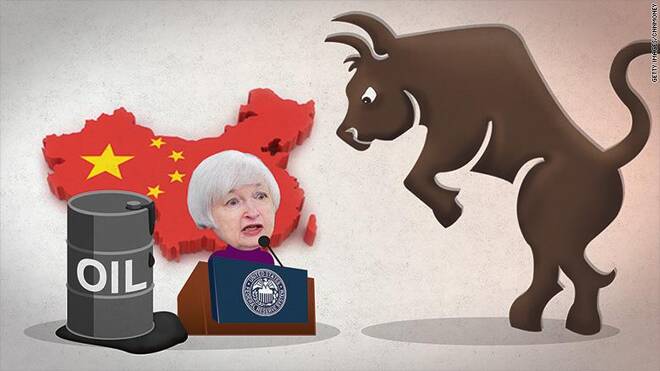Advertisement
Advertisement
WTI & Brent Oil Prices Diverge
By:
Crude oil traders showed very little reaction to a significant decline in US oil inventories. The EIA report released at the open of the US session showed
Crude oil traders showed very little reaction to a significant decline in US oil inventories. The EIA report released at the open of the US session showed a surprise decline of 0.75 million barrels while markets were expecting another increase. The U.S. Energy Information Administration on Wednesday reported that crude inventories fell by 800,000 barrels for the week ended Feb. 5. That is contrary to the 2.4 million-barrel increase reported by the American Petroleum Institute late Tuesday and analysts polled by Platts expected a rise of 3.2 million barrels for the week.
EIA and API can differ as survey responders are required to submit supply data to the government, but data are voluntarily reported to the industry group. The weekly decline follows four-straight weeks of inventory climbs.
Crude oil remained below the $28 price level keeping stress on the global markets. Brent oil saw gains today to trade at 31.15 adding 85 cents. Data released today showed that OPEC pumped 32.33 million barrels of oil per day in January, an increase of 0.131 million barrels compared to last December, the cartel’s latest report showed. OPEC, continued to maintain its high level oil output in the past months despite the plunge of the world crude price.
“Crude oil output increased mostly from Nigeria, Iraq, Saudi Arabia and Iran,” the report said. Tehran said it could significantly increase its oil production shortly after the sanction relief.
There seemed to be no sign the OPEC members are cutting their oil output to rebalance the market. In the past several meetings of OPEC member states in Vienna, the cartel refused to reduce its crude production to defend its market share, and OPEC has to keep pumping over 30 million barrels of crude oil per day. Despite the low oil price, the other big oil pumpers, like the U.S. and Russia, also maintained their high-level oil output.
The Organization of the Petroleum Exporting Countries has revised its forecast for oil demand in 2016, predicting an increase in demand of 40,000 barrels per day, to reach 94.21 million barrels a day, the Monthly Oil Market Report.
Oil supplies from non-OPEC countries in 2015 increased by 1.32 million barrels per day — up to 56.99 million barrels per day. This was a rise of 0.12 million barrels a day compared to the January forecast.
According to preliminary data, the total volume of global oil production in January increased by an average of 0.03 million barrels per day compared to the previous month — reaching 95.64 million barrels per day. While production in non-OPEC countries decreased by 0.1 million barrels per day, the output of OPEC countries, on the contrary, increasing by 0.13 million barrels per day.
The oil market should start to rebalance in the second half of the year but it will be some time before the $100 a barrel price is seen again, BP chief executive Bob Dudley said Wednesday.
Mr. Dudley said the oil giant is “very bearish” on the first half of 2016, but things will start to turn around in the third or fourth quarter.
“By that time, every storage tank and swimming pool in the world will be filled with oil,” Mr. Dudley said, warning that a price recovery would likely start slowly.
Speaking at the International Petroleum Week conference in London, Mr. Dudley acknowledged that the mood was more subdued than usual.
About the Author
Barry Normanauthor
Advertisement
